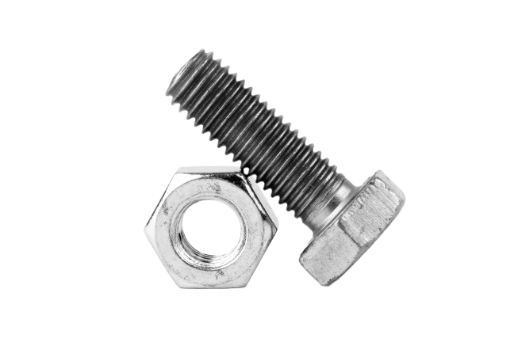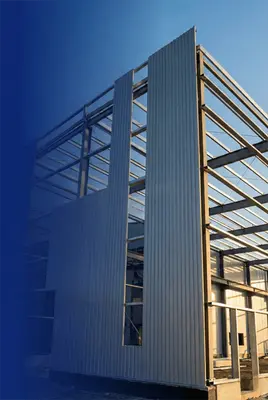
Selecting the correct screws for subfloor installation is pivotal to ensuring a stable, squeak-free floor. This guide will focus on identifying the optimal types, sizes, and installation techniques of screws for various subfloor materials to complete your projects with reliability and precision.
What You Should Know About Subfloors in Residential Construction
A subfloor is the foundational layer in a residential construction project that provides a stable, flat surface upon which the main flooring — such as hardwood, tile, or carpet — is installed. Positioned directly above the floor joists, the subfloor not only supports the finish flooring, it also contributes significantly to the structural integrity and insulation of a home.
Types of Subfloor Materials
Plywood Subfloors
Plywood is one of the most common materials used for subfloors due to its strength and durability. It is made from thin layers of wood veneer, or plies, that are tightly held together with a specially-formulated adhesive. Their adjacent layers have the wood grain rotated up to 90 degrees relative to each other. This cross-graining minimizes the wood's tendency to split and reduces expansion and shrinkage in order to provide a sturdy base for flooring.
Oriented Strand Board (OSB)
OSB is another popular material for subfloors. Composed of compressed layers of wood strands that are mixed with adhesives and then pressed into dense sheets, OSB is typically cheaper than plywood and has similar or better structural characteristics. It is known for its uniform composition and has become a staple in modern residential construction.
Particle Board
Particle board is made from compressed wood chips and resin, which makes it the least durable option for subfloors. It is susceptible to moisture damage and therefore less commonly used in areas where durability is crucial.
Newer Materials
Recent advancements have introduced new subfloor materials like high-density foam panels and gypsum fiber panels, which offer improved moisture resistance and insulation properties. These materials are lighter and easier to install, and provide a sound dampening effect and thermal insulation.
Understanding Subfloor Screws: Types, Benefits, and Applications
While subflooring is often installed with high-quality adhesive, utilizing the correct screws for your subfloor is key to ensuring a solid, stable, and quiet flooring. The right type of screws can significantly enhance both the installation process and the longevity of the subfloor.
Types of Screws Suitable for Subfloor
Self-Tapping Screws
Ideal for softwood and plywood, self-tapping screws penetrate without the need for pre-drilling. They are a staple for quick and efficient subfloor installations where minimal disruption is required.
Wood Screws
Essential for hardwood subfloors, wood screws are designed to prevent the wood from splitting while also providing a secure hold. Their deeper threads ensure that they grip firmly into the wooden joists beneath the subfloor.
Coated and Galvanized Screws
Best for environments prone to moisture, these screws are treated to resist corrosion and enhance the longevity of your subfloor. They are particularly useful in areas that may experience high humidity or direct water exposure.
Deck Screws
Deck screws are versatile screws often used in subflooring for their strength and durability. They have a sharp point and aggressive threads that make them ideal for a wide range of wood types.
Construction Screws
Known for their strength, construction screws are suitable for heavier duty applications where more holding power is needed. They often feature a flat head and a hardened steel construction, which makes them durable choices for subflooring.
Each type of screw has specific benefits that make them suited to different kinds of subfloor materials and environmental conditions.
5 Benefits of Selecting the Right Screws for Subfloor Installation
Choosing the right fasteners for securing a subfloor is not just a minor detail—it's a crucial choice that impacts the entire flooring process.
1. Choosing the right screws not only simplifies installation, reduces labor time and costs, it also enhances the longevity and stability of the flooring.
2. These specially designed screws ensure that the subfloor remains firmly anchored, to prevent common issues such as warping or shifting that can arise over time.
3. Using the appropriate screws significantly reduces the incidence of annoying floor squeaks, a frequent complaint among homeowners.
4. Floor squeak noise often results from movement between the subfloor and the joists, which can be minimized with the correct fasteners.
5. Additionally, high-quality screws are designed to withstand environmental stresses like moisture and temperature fluctuations, which are vital for maintaining the structural integrity of the floor.
Installation Insights: Techniques and Tools for Efficient Subfloor Screwing
Proper Screw Spacing and Placement
Correct screw spacing is crucial for subfloor integrity. Screws should be placed 6-8 inches apart along the edges, and about 12 inches in the field. This spacing helps distribute weight evenly and prevents the flooring from moving or squeaking under pressure.
Recommended Tools for Installation
For efficient subfloor installation, utilizing a high-quality cordless power drill and an automatic feed screw system is essential. Cordless drills offer flexibility and ease of use, to allow for mobility around the job site without the constraint of power cords. These drills are crucial for driving screws accurately and efficiently into the subfloor.
Additionally, incorporating an automatic feed screw system can significantly expedite the installation process. This tool automates the delivery of screws to the drill, for rapid and consistent screw placement. Such systems are invaluable for large-scale projects where speed and consistency are critical by ensuring that each screw is correctly positioned to enhance the subfloor's stability and durability.
These tools not only boost productivity, they can also help maintain high installation standards, which are crucial for the longevity and performance of the flooring.
Product Focus: Fastener Systems Subfloor Screws
Fastener Systems offers a range of subfloor screws that are engineered for optimal performance in various flooring applications. These screws are available in different lengths and sizes, to meet specific project requirements from residential renovations to large-scale commercial constructions.
Secure Your Subfloor the Right Way with Fastener Systems Screws
For those who value durability and precision in their construction projects, choosing the right subfloor screw is essential. Fastener Systems, Inc. (FSI) provides a comprehensive selection of screws designed for various subfloor applications.
Contact us today for more information!

